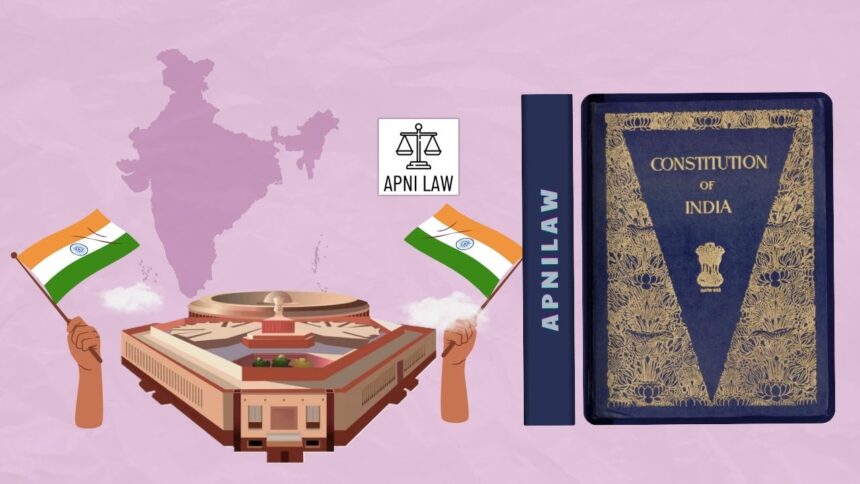Introduction
Elections are the heart of a democracy, and India’s electoral system is one of the largest in the world. With over 900 million eligible voters, ensuring free, fair, and transparent elections is a massive task. Over the decades, India has witnessed several electoral reforms to strengthen democratic integrity and enhance public trust. These reforms have evolved from manual ballot papers to the use of Electronic Voting Machines (EVMs), the introduction of the Voter Verifiable Paper Audit Trail (VVPAT), and discussions on state funding of elections. Each step reflects India’s commitment to improving transparency, reducing corruption, and making elections more inclusive.
Evolution of Electoral Reforms in India
After independence, India’s first general election in 1951–52 set the foundation for a democratic process that continues to evolve. Initially, elections were conducted using paper ballots, which were time-consuming and vulnerable to manipulation. Over time, issues like booth capturing, voter intimidation, and excessive use of money in elections prompted a series of reforms.
The introduction of Electronic Voting Machines (EVMs) in the 1990s marked a major leap in electoral transparency. They simplified voting, minimized counting errors, and reduced the chances of vote tampering. However, concerns about electronic security led to the introduction of the Voter Verifiable Paper Audit Trail (VVPAT) system in 2013. VVPAT allows voters to verify their votes through a printed slip, enhancing accountability and confidence in the electoral process.
Major Electoral Reforms Implemented Over Time
The Election Commission of India (ECI), established under Article 324 of the Constitution, has been at the forefront of implementing reforms to ensure free and fair elections. Reforms such as voter ID cards, model code of conduct, ceiling on election expenditure, and compulsory disclosure of criminal and financial backgrounds of candidates have strengthened electoral integrity.
The Representation of the People Act (RPA) of 1951 was amended several times to curb electoral malpractices and enhance transparency. The introduction of the NOTA (None of the Above) option in 2013 allowed voters to reject all candidates if none seemed suitable. Moreover, the Election Commission has encouraged the use of technology for voter registration, EVM monitoring, and real-time result updates to make the process more efficient.
VVPAT: Enhancing Transparency and Trust
The VVPAT system is one of the most significant technological reforms in recent times. When a voter casts a ballot on the EVM, a printed slip displays the chosen candidate’s name and symbol for a few seconds before dropping automatically into a sealed box. This process provides a physical verification of the vote, reducing the chances of tampering or software manipulation.
The Supreme Court in Subramanian Swamy v. Election Commission of India (2013) upheld the use of VVPAT, emphasizing that it was vital for transparency and voters’ confidence. Since the 2019 general elections, VVPATs have been used in all constituencies, allowing for random cross-verification of EVM results. This system has strengthened voter trust in the electoral process and made the system more accountable.
Addressing the Influence of Money and Criminalization
One of the biggest challenges in Indian elections remains the excessive use of money and the growing influence of candidates with criminal backgrounds. Political funding often lacks transparency, and unregulated cash donations make it difficult to track the source of funds. To address this, electoral reforms have focused on capping expenditure, enforcing stricter financial disclosure rules, and promoting cleaner funding mechanisms.
The introduction of electoral bonds in 2017 aimed to make political donations more transparent. However, the scheme has faced criticism for favoring anonymity and large donors. Many experts now advocate for state funding of elections, where the government would bear the cost of elections for recognized parties to reduce dependence on private funds. This model, used in countries like Germany and France, could potentially make elections fairer and lessen corruption.
Technological Innovations in the Electoral Process
Technology continues to redefine India’s electoral framework. The Election Commission has adopted several digital tools such as the cVIGIL app to report violations of the Model Code of Conduct, and the Voter Helpline app to register and check voter information. The use of GPS tracking for EVM transportation and live webcasting of polling booths has further improved monitoring and transparency.
Blockchain-based voting systems have also been explored for future elections to enable remote and tamper-proof voting for migrant workers. These innovations aim to make elections more accessible and secure, ensuring that every citizen’s vote counts.
Challenges in Implementing Electoral Reforms
Despite continuous progress, challenges remain. The misuse of money, misinformation campaigns, paid news, and voter apathy continue to threaten the fairness of elections. Political polarization and fake news on social media have added new dimensions to electoral challenges. Furthermore, while VVPAT and EVMs enhance transparency, allegations of tampering and distrust among political parties sometimes undermine confidence in these systems.
The debate over state funding also continues. Critics argue that public funding could burden the national budget and might not fully prevent black money in politics. There is also the challenge of ensuring equal representation for smaller parties and independent candidates under such a system.
Future of Electoral Reforms in India
The future of electoral reforms lies in striking a balance between technology, transparency, and inclusivity. Strengthening institutions like the Election Commission and implementing stricter laws on political funding will be crucial. Digital literacy programs can empower voters to identify misinformation, while reforms in the RPA can ensure faster disqualification of candidates with serious criminal charges.
Reforms must also focus on increasing voter participation through awareness campaigns, particularly among urban and first-time voters. Reducing the gap between rural and urban voting turnout will help make the electoral process more representative.
FAQs on Electoral Reforms in India
1. What is the purpose of VVPAT in elections?
The VVPAT system allows voters to verify their votes on a paper slip, ensuring transparency and reducing the possibility of tampering with EVMs.
2. What is state funding of elections?
State funding refers to the government financing the election expenses of political parties or candidates to reduce dependence on private donations and minimize corruption.
3. Why are electoral reforms important in India?
Electoral reforms ensure free, fair, and transparent elections, enhance public trust, reduce corruption, and make the democratic process more inclusive and accountable.
Conclusion
Electoral reforms in India demonstrate the country’s commitment to strengthening its democratic institutions. From paper ballots to EVMs and VVPAT, and from opaque funding to calls for state-sponsored elections, every reform reflects a step toward cleaner and more transparent governance. While challenges such as money power and misinformation persist, India’s evolving electoral framework continues to adapt to new realities.
The journey toward perfect elections is ongoing, but each reform brings the nation closer to realizing the true essence of democracy, one where every vote counts, every citizen matters, and integrity defines the electoral process.
For any specific query call at +91 – 8569843472







